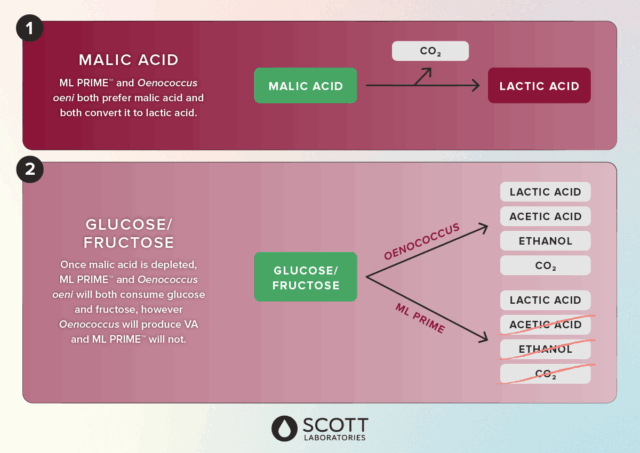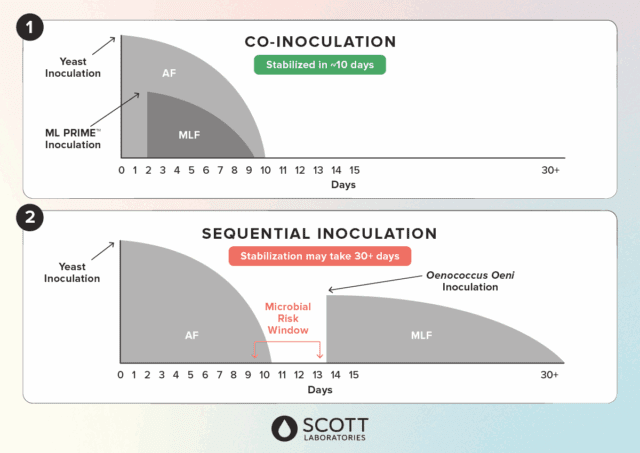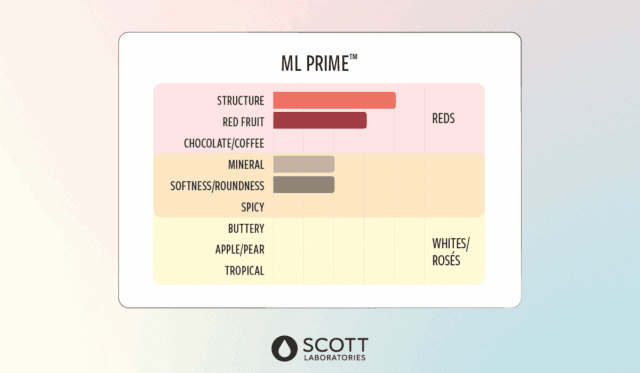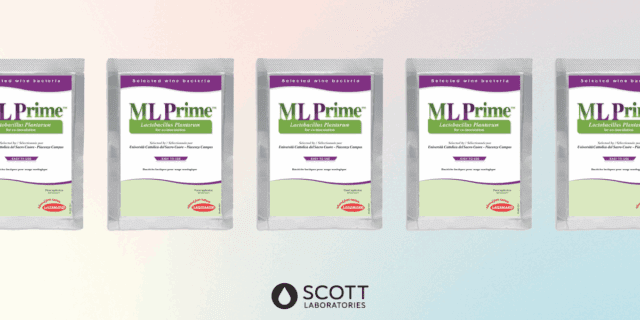It’s hard to imagine a time when malolactic fermentation (MLF) in red wines wasn’t standard practice. However, it was not too long ago that MLF could only be completed via spontaneous lactic acid bacteria which was often unpredictable, slow to initiate, and sometimes failed to complete MLF altogether.
The introduction of Oenococcus oeni starter cultures in the 1960s and ’70s marked a turning point, bringing consistency, control, and reliability to the process. These cultures evolved into user-friendly, freeze-dried preparations, transforming MLF and turning it from gamble to a given.
But science presses onward and research began exploring the genetic diversity of lactic acid bacteria found in wine. This work led to the discovery and characterization of a unique strain of Lactiplantibacillus plantarum. Now, Scott Laboratories has introduced this strain to the U.S. as ML PRIME™, the first and only non-Oenococcus bacteria currently available for malolactic fermentation.
Introducing ML PRIME
ML PRIME is a strain of Lactiplantibacillus plantarum, a bacterium with a unique metabolism that offers several compelling advantages. ML PRIME does not produce volatile acidity (VA) from glucose and fructose, an issue that can be a concern with Oenococcus strains.

“Oenococcus prefers malic acid, but once that’s gone, it can start consuming sugars, leading to VA production,” explains Dr. Nichola Hall, General Manager at Scott Laboratories. “That’s why many winemakers avoid co-inoculation and instead opt for sequential inoculation, which can drag MLF out for weeks or even months.”
Co-inoculation can be a time-saving measure that helps tank turnover by simultaneously completing alcoholic and malolactic fermentation. However, for some, the risks outweigh the rewards. ML PRIME changes that. Its unique metabolism eliminates the risk of VA production, making it a safe choice for co-inoculation.

“Speaking as a microbiologist, ML PRIME is fascinating and unique in the world of wine microorganisms. Speaking as a winemaker, it is exciting as it offers a safe and efficient route to complete MLF, allowing quick tank turnover and minimizing post-fermentation monitoring.”
Speed Without Compromise
ML PRIME completes MLF in 3 to 9 days, and this speed doesn’t come at the expense of quality. ML PRIME has a neutral sensory impact, and wines retain their aroma, texture, and structure. ML PRIME also lacks the ability to produce diacetyl and is great for those looking to stylistically avoid buttery character.

“Winemakers will love the speed and convenience,” Dr. Hall adds. “It’s fast, efficient, and doesn’t compromise wine quality. ML PRIME has over 10 years of use outside the US, and trials conducted here have had great results. At Scott Labs, we don’t release anything unless we’re confident it will deliver.”


